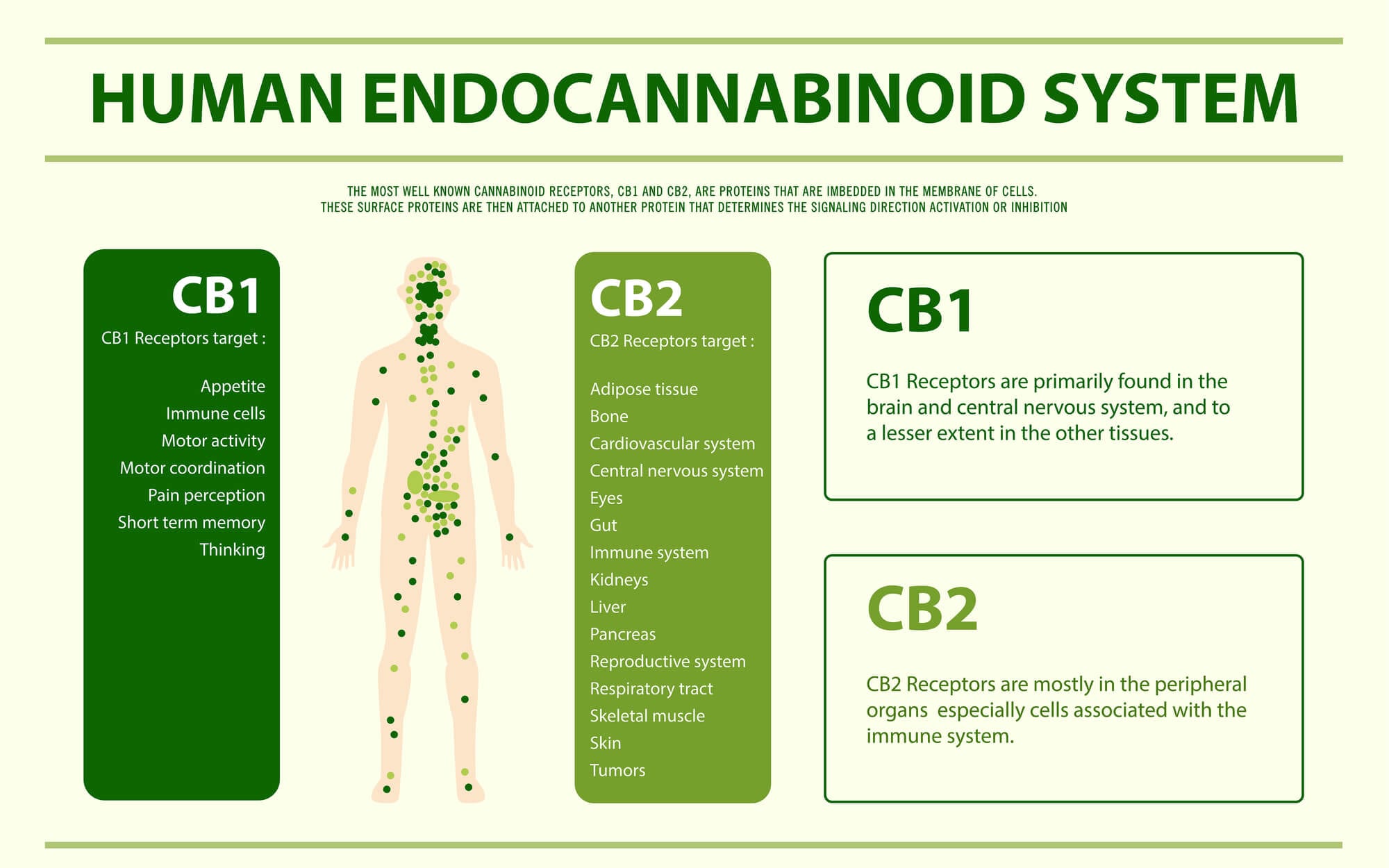
The human body is an impressive machine and optimally functions only when all systems are in top-notch condition. For the body to operate correctly, homeostasis must be in place, which is a stable internal environment. CBD’s effects and purpose can be understood at a much more in-depth level if a CBD user has knowledge of the human endocannabinoid system. The endocannabinoid system helps coordinate a variety of physiological processes as well as our emotions, memory, and physical sensations. Because of this, the phytocannabinoid, cannabidiol (CBD), can interact with the endocannabinoid system to provide users with relief in a variety of ways.
What Is Homeostasis?
Our bodies need regulation of specific conditions to function optimally. In particular, the human body operates under homeostasis or the automatic regulation of these vital conditions such as body temperature, blood sugar level, water content, cell counts and size, oxygen, and sleep. Our bodies must remain within specific parameters to feel top-notch, so we don’t get sick. Homeostasis is maintained by the human body through negative feedback mechanisms, meaning all vital components are monitored so carefully that we can identify when something goes wrong and make a correction. Aside from corrections, we are encouraged to monitor our nutrition and physical activity and make general lifestyle changes necessary to maintain optimal functioning.
What Is the Endocannabinoid System?
The endocannabinoid system exists naturally in our bodies that is exceptionally vital to proper functioning. As a central regulatory system, it affects a wide range of the human body’s biological processes. Three elements make the endocannabinoid system that work simultaneously: endogenous cannabinoids or endocannabinoids, cannabinoid receptors, and enzymes. Endocannabinoids and cannabinoid receptors exist in various parts of the human body, such as the brain, central nervous system, organs, connective tissues, glands, and immune cells.
The cannabinoid receptors exist on cells’ surfaces and keep track of what’s going on in our bodies. The status and changing circumstances are communicated to the cell, which allows for necessary measures to be taken. Due to the intense studying of the endocannabinoid system, scientists have identified two primary cannabinoid receptors in the human body, CB1, and CB2 receptors.
The endocannabinoid system has been named the bridge between the human body and mind due to its ability to communicate with our brain to let us know that something isn’t functioning correctly or our body needs an adjustment.
How Does It Work?
Three different components work simultaneously to ensure the endocannabinoid system operates correctly. Each part has different functions and exists naturally within the human body. The human body naturally produces endocannabinoids to level unbalanced bodily functions such as appetite and digestion, sleep, stress, chronic pain, mood, and more. Endocannabinoids bind to cannabinoid receptors for multiple reasons, such as relieving pain or signaling inflammation. Once endocannabinoids have served their purpose, natural enzymes exist to break down endocannabinoids until another problem arises.
Cannabinoid Receptors
Both CB1 and CB2 cannabinoid receptors exist in your body, focusing on the peripheral and central nervous system and the immune system. Cannabinoid receptors act as locks that endocannabinoids, cannabinoids, and terpenes can fit into like a key.
- CB1: Cannabinoid receptors labeled as CB1 are more commonly found in the nervous system, connective tissues, gonads, glands, and organs. The endocannabinoid known as AEA binds with CB1. For example, AEA may bind with CB1 receptors in a spinal nerve to relieve pain.
CB2: Cannabinoid receptors labeled as CB2 are more commonly found in the immune system and associated organs and tissues. The endocannabinoid known as 2-AG binds with CB2. For example, 2-AG may bind with CB2 receptors in your immune cells to signal that your body’s experiencing inflammation.
Enzymes
Two different kinds of enzymes exist in the human body responsible for breaking down endocannabinoids once they’ve carried out their function. Enzymes exist in the human body to ensure that endocannabinoids are used where they’re needed, but not for longer than necessary.
- FAAH: Fatty Acid Hydrolase (FAAH) breaks down the endocannabinoid AEA.
- MAGL: Monoacylglycerol Acid Lipase (MAGL) breaks down the endocannabinoid 2-AG.
What Is an Endocannabinoid Deficiency?
The endocannabinoid system helps maintain homeostasis within the human body, meaning it plays a large role in keeping us healthy. Due to its direct effect on our health, a deficiency of endocannabinoids has the potential of causing an extensive range of complications in the body. Both mental and physical complications might not be fixed if our bodies don’t have enough endocannabinoids. Endocannabinoid deficiency is a theory that many believe to be a term used for any conditions and symptoms developed when the body’s endocannabinoid system is out of balance. Scientists in the world today believe that altering how a human’s endocannabinoid system functions may protect against certain diseases and sicknesses.
Final Thoughts
The endocannabinoid system is an extremely complex aspect of the human body, playing a large role in keeping internal processes functioning correctly. This system is not only crucial to our survival but is a critical component of understanding what impact CBD has on our bodies. Today, many forms of CBD are available from oils and edibles to lotions and salves. As researchers continue to study and explore the functioning of the endocannabinoid system and how it can be altered, CBD and other cannabinoids may balance a variety of bodily functions such as mood, appetite, discomfort, and more.

